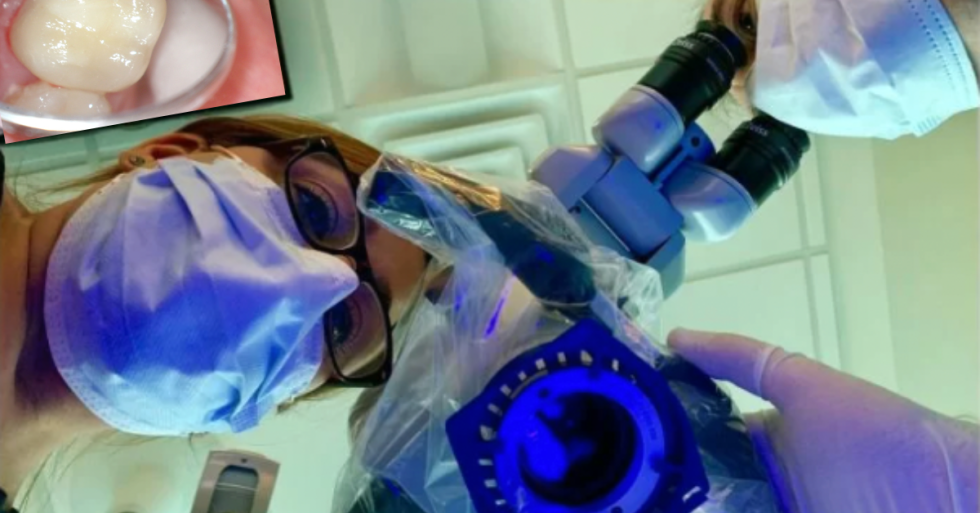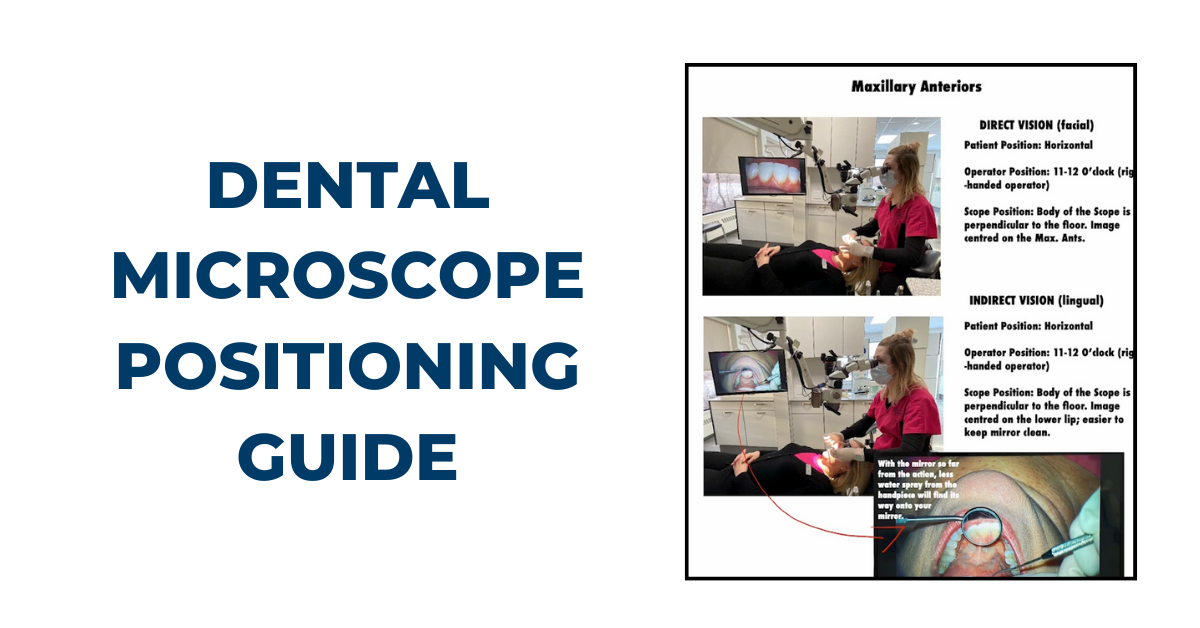Top 5 Mistakes New Dental Microscope Users Make
.png)
Integrating a dental microscope into your practice should feel like a “win” for enhanced visualization, improved treatment outcomes, and reduced fatigue. However, like any new tech in your operatory, the learning curve to get proficient can seem overwhelming.
To help new dental microscope users make a smooth transition and maximize the advantages of this advanced equipment, it is important to be aware of common mistakes and how to avoid them.
This article references teachings of Dr. Michael Wenzel from his Inside Dentistry CE Webinar: Microscopes for the General Dentist. Dr. Michael Wenzel is a General Practitioner based in Alberta, CA.
These learnings are aimed to help:
- Dental school students (endo & other specialties) training with scopes
- GPs considering a scope for restorative & endo work (first time with magnification)
- Dental professionals considering transitioning from loupes
There are certainly some mistakes new scope users do to make the learning curve more daunting than it has to be. Today, we will discuss the top five most common mistakes new dental microscope users make and provide practical tips for success. Let’s dive in!
#1 Too Much Magnification
When you first tried out your dental microscope, you may have been like many other doctors who are excited about the high powers of magnification. After all, the ability to see up to 20X what the naked eye can see, with powerful illumination to visualize any crack or cary without shadows, is one of the leading reasons doctors choose dental microscopes for their endo and restorative procedures.
Higher powers of magnification narrow your field of view and decrease depth. This concept is important because utilizing high magnification during a procedure definitely improves your ability to see fine details but, without training, can cause difficulty navigating the oral cavity. Even small movements become greatly amplified when working under high magnification, so it can become more difficult to track your movements without the correct amount of training/practice.
In these circumstances low magnification of 2-5X may be more beneficial. Higher magnification of 8-13X may be useful when dissecting within a small area requiring less movement, e.g. in papilla preservation techniques.
In general, magnification should allow the doctor to operate with ease, without increasing their usual operating time required for a particular surgical procedure. With training and experience, doctors can operate between magnification levels easily, and can evaluate when the advantages of higher powers of magnification outweigh a narrower field of view.
#2 Poor Case Selection
Having a basic understanding of where in the mouth a scope is easy to use versus more difficult may save frustration while on the learning curve.
Lower molars may seem like an easy starting point because they were easier to learn in dental school – direct vision, right? Unfortunately, this does not hold true for the microscope learning curve. Because of the fixed perspective of a dental microscope, prepping and restoring lower molars predictively requires either excellent positioning skills in direct vision OR mastery of the mandibular arch on indirect vision.
Upper-direct restorative is a great option for learning the scope, because you’re already used to indirect vision with mirror observation. Getting good with your mirror will help you see multiple angles without needing to move your scope or your neck.
#3 Cutting Costs
If you plan to use your microscope regularly, cutting costs may leave you high-and-dry when it comes to enjoying the main benefits of a microscope. Choosing upfront cost on a cheaper scope may cause major sacrifices to your visualization, magnification, and almost even more importantly – your comfort! Good ergonomics are key to your long-term healthy, especially with long hours in uncomfortable or arching positions.
Choosing from a major manufacturer will ensure you’re maximizing your benefits, with optional accessories to make you more comfortable – and even shorten your learning curve (such as a multifocal lens for adjusting focus, or the 45 degree ergonomic extender for additional comfort).
# 4 Changing Techniques Too Rapidly
When discussing dental microscopes, many scientific publications emphasize new techniques or technological advances, some of which are mainly for research while others are so sophisticated that they are beyond the scope of most clinicians in practice.
A dental microscope is not only useful in research and for specialists, but also helps a general practitioner to perform routine dental care with greater precision and accuracy. With experience on a dental microscope, doctors do not need to necessarily change their techniques, but should continue with those with which they are most familiar. After adjusting to using a dental microscope, you may consider applying new techniques as your skill level with a microscope improves.
# 5 Poor Positioning
Here’s another mistake that dentists can make, ultimately sacrificing their comfort during the learning curve. Poor positioning applies in a number of ways, primarily:
- Microscope mount
- Doctor stool
- Doctor head
- Patient in the chair
Learning how to effectively position your scope so that the operating field or target tooth can be visualized is part of getting comfortable with your scope. To get acclimated, some doctors seek formal training, while some will learn it through trial and error.
The most important things to be mindful of when learning how to get comfortable with microscope positioning is that in addition to your scope itself, the position of the exam chair, patient’s head and mirror also need to be considered when trying to visualize the operating field or a target tooth.
For more guidance on this topic, as one of the more significant barriers to comfort during the learning curve – we cover this topic in greater depth in our article: Dental Microscope How-To Guide: Integration & Positioning. We urge you to check out this article for more tips on positioning!
More Value With a Global Microscope
At Global Surgical, we’re committed to your success, with durable products and our knowledgeable Technical & Customer Service teams. And, we guarantee your peace of mind with our limited lifetime warranty (US & Canada only).
Many of the doctors we speak with begin using their scopes with nearly every patient – from observation and diagnosis to treatment planning and procedure, so we know it’s important they are able to use their scope effectively.
Questions? Reach Out!
If you’re just getting started with a dental microscope, or considering adding a scope to your practice, we are here to help! We can help configure and customize your scope to your clinical needs, helping you get started as quickly as possible. Our Technical & Customer Service teams are rated among the best in the business.
In fact, one doctor reviewed his experience at Global as: “I have never purchased a product that had better customer service than my Global Microscope. It’s great to know that I can pick up the phone and have an entire team of experienced professionals willing to help me promptly.” – Dr. Osvaldo Z. Mayoral, D.M.D.
Get started by reaching out to us at 800-861-3585 or by clicking the button below.



